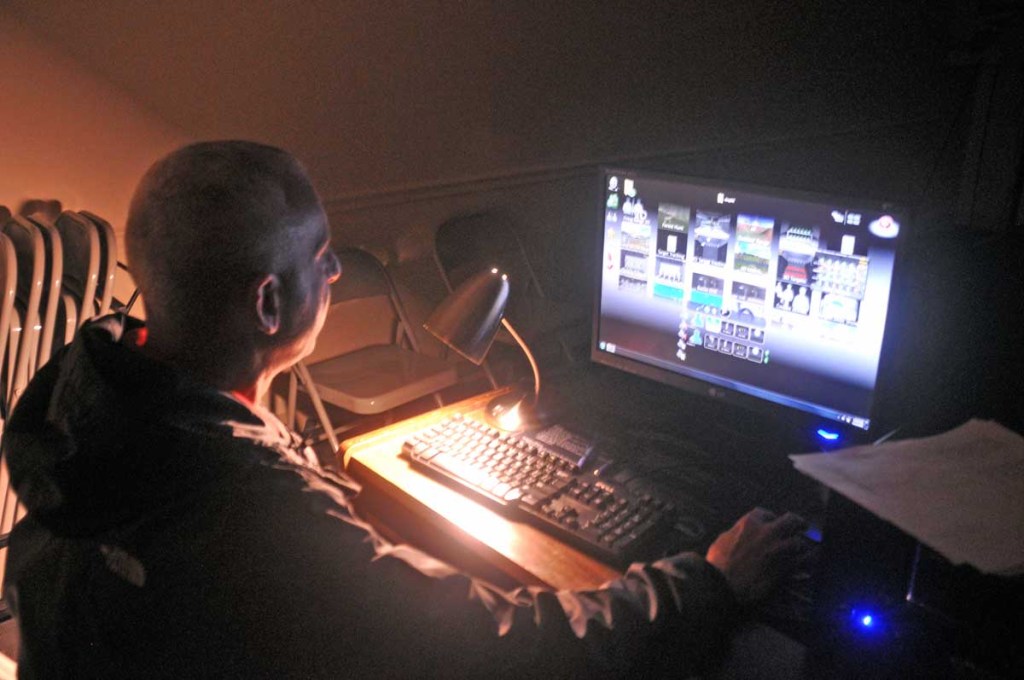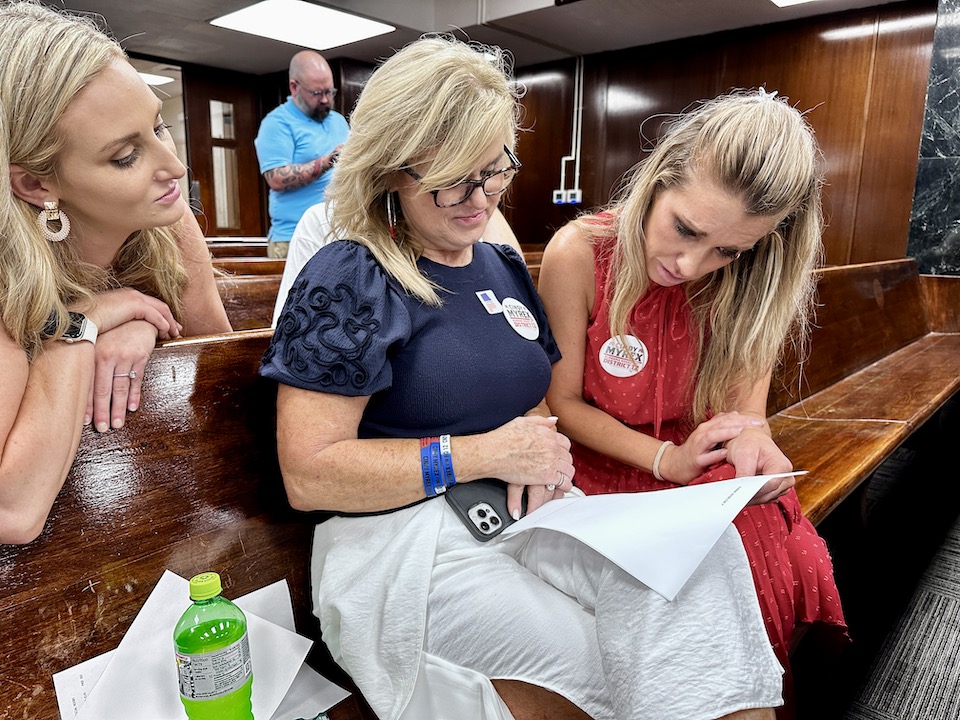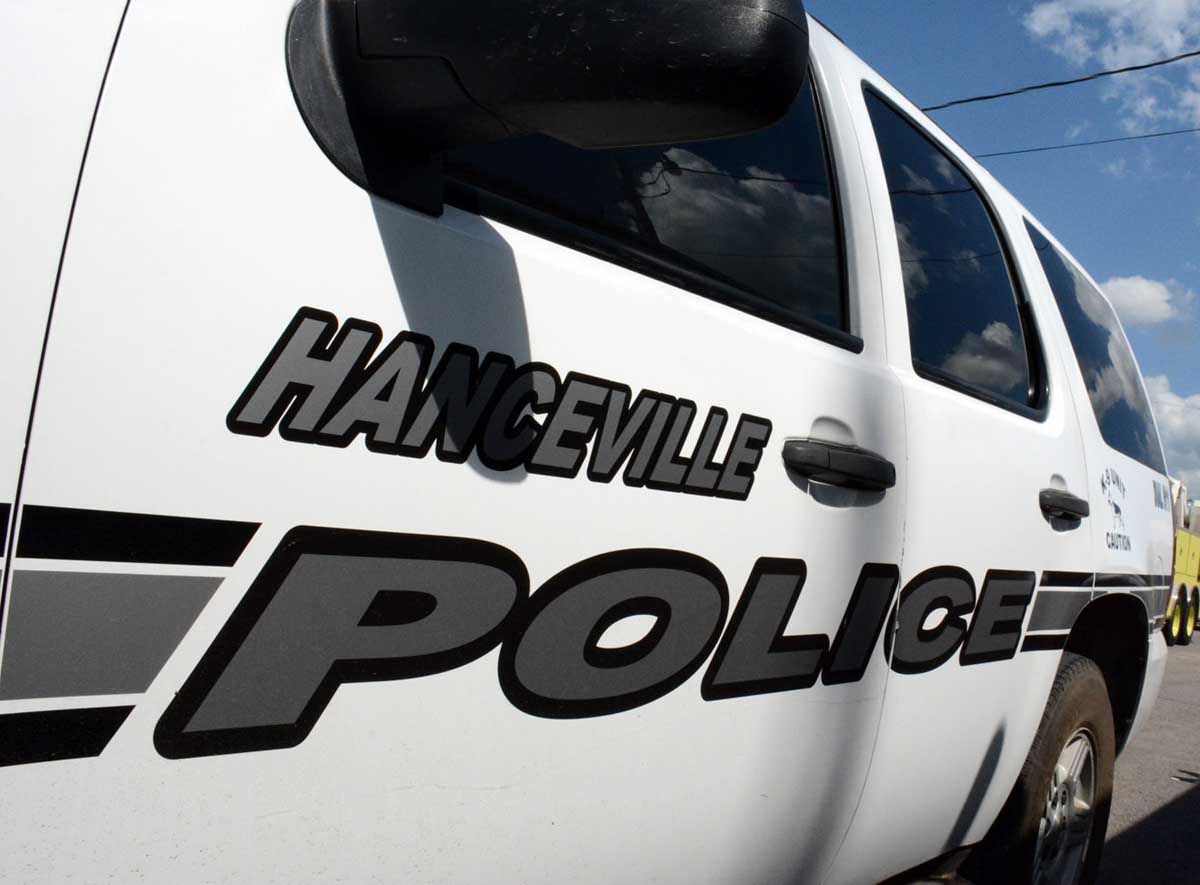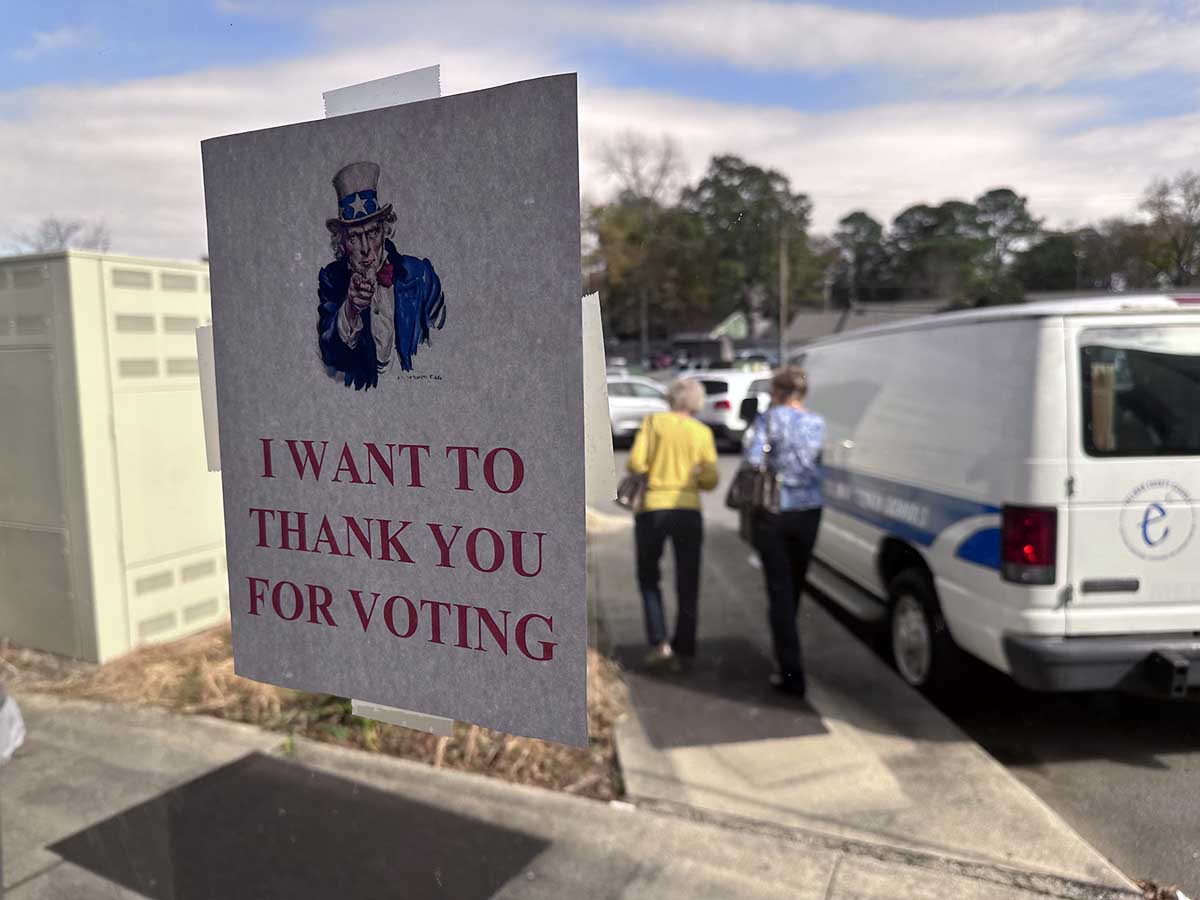Simulator allows Ky. officers, civilians to experience real-life police situations
Published 12:05 pm Friday, April 15, 2016

- Lt. Todd Allen of the Madison County (Kentucky) Sheriff’s Department cycles through the more than 400 judgment scenarios included in the MILO firearms simulator Tuesday morning. The simulator is being used by local law enforcement to enhance training and provides officers with life-like scenarios.
MADISON COUNTY, Ky. – While performing a routine traffic stop, things quickly turned from bad to worse as the disgruntled driver and her passenger reached inside the vehicle, drew a weapon and fired on an officer.
Suddenly the screen goes dark and overhead incandescent lights pop on, illuminating the third story room of a central Kentucky sheriff’s department building where the all-too-real scenario just played out in front of a captive audience.
Trending
Thankfully, no one was injured earlier this week as members of the Madison County, Kentucky Fiscal Court and sheriff’s deputies ran multiple training simulations using the MILO firearms simulator on loan from the Kentucky Association of Counties (KACO).
The life-like simulator, which is programmed with multiple scenarios, is being used by law enforcement to enhance officer training under high-stress, snap judgment situations.
Magistrate Tom Botkin, who went through a few scenarios with the simulator Tuesday, said it was an “eye opening experience” for him.
“It’s good we have a tool such as this for our law enforcement to work with,” Botkin said of the simulator. “I went through a traffic stop with a known smuggler and an active shooter situation in an office environment and it really makes you feel like you are there and it is really happening.”
Magistrate John Tuder, who also went through several scenarios, said he was taken aback at how quickly a situation can change and the importance of training law enforcement on different techniques to deescalate a tense situation.
“It happens so much quicker than you think,” Tuder said. “It’s very life-like and a great way for officers to train in different techniques and to teach them how to make life and death decisions.”
Trending
Unlike the growing variety of video games that allow players to experience situations police officers may encounter, simulators like the MILO firearms simulator are used nationwide to offer training officers, officials and even civic groups the opportunity to experience the situations and circumstances hundreds of thousands of law enforcement members across the country face daily.
Lt. Todd Allen said the high-tech simulator offers law enforcement a chance to train in more than 400 different scenarios and to alter the outcome based on how an officer reacts to the situation.
“We can pick any scenario, and behind the computer, I have a list of options on how the suspect can react. I can make them comply, run or draw a weapon,” Allen explained.
The simulator also comes equipped with a camera where trainers can watch an officer’s movements during specific encounters and study body language and reaction times.
“We can watch them go through a simulation and then show it back to them,” Allen said. “It gives a chance to correct behaviors and teach them how to be safer or less aggressive.”
The lieutenant said the simulator gives officers a chance to discuss when to use force tactics and when to communicate.
“We don’t want the police to shoot automatically,” said Allen. “So this tool allows us to put them in high-stress situations and discuss ways to alter the situation so that we can have a positive outcome. Usually, 98 percent of the time they are gonna comply.
“However, sometimes they don’t and this simulator allows us to test you physically, mentally and emotionally so you can be ready when the time comes.”
The simulator also allows officers to use life-like weapons of equal weight, such as they would have on their utility belts including cans of mace and tasers.
Chief Deputy Maj. Tony Terry, who has trained law enforcement for years, said the importance of training simulators such as the MILO is imperative to produce highly trained police forces.
“As good guys, we are always reacting, that’s the bad side,” Terry said Tuesday. “However, there are things that I can do to alter his plans. The difference between us and them is that we train. Bad guys don’t train.”
Terry said training in life-like scenarios prepares officers for the worst.
“We train in high-stress situations, because what you train under is how you will react in real life. When you are faced with a bad situation you go back to your training and we want our law enforcement prepared,” he said
Allen said the simulator is a great low-cost option that helps test and train officers to make judgement calls.
“It’s free to use and we can put our officers through so many different situations that, if we tried to do it our own, it would quickly drive up costs. When we train, we still have to make sure we have officers patrolling and on the streets. With this, we can schedule the times and do it all within this room at no cost,” Allen said.
Another bonus of the simulator is the chance for civilians to get a small glance of the mindset of an officer.
Travis Keys, 19, who has an interest in joining the police force, said he never realized all the things that go through the mind of a officer on a call.
“You don’t know what’s happening,” Keys explained. “You are constantly having to make split-second decisions. When someone is making these crazy movements and acting strange and then starts coming towards you, I felt threatened. You start to see the reasoning behind why officers act the way they do.”
According to Allen, local law enforcement has been using the MILO firearms simulator for three years and they schedule time with the local KACO representative in the spring and fall for the department to use the simulator for training. The MCSO has the simulator until the 25th of this month.
“Training is so important to us,” Terry said Tuesday. “It’s like I tell people, I’ve never had a bad guy call me the night before and warn me about what he is going to do at the traffic stop tomorrow. It’s why we train, so we can prepare for the unexpected.”
Barker writes for the Richmond, Kentucky Register.





